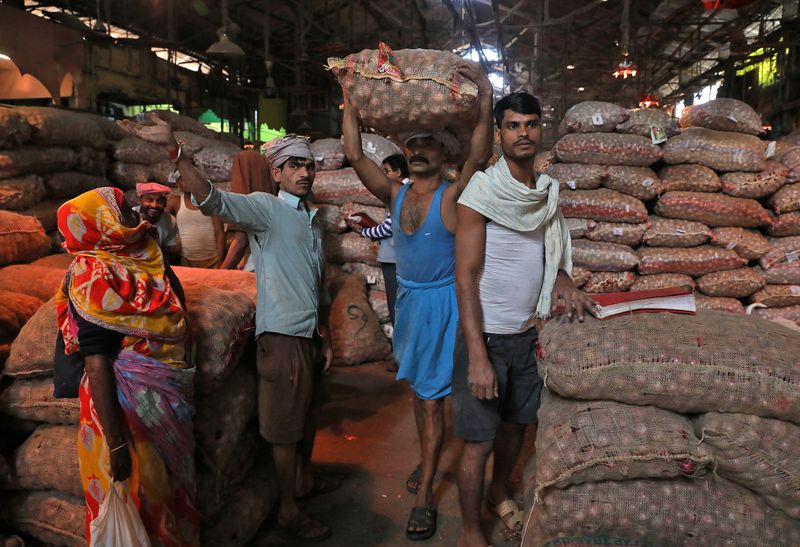By Manoj Kumar
NEW DELHI (Reuters) – India’s annual retail inflation eased to a three-month low of 6.77% in October, helped by a slower rise in food prices and a higher base effect, strengthening bets of smaller rate hikes by the country’s central bank at its meeting next month.
The October reading was higher than the 6.73% forecast by economists in a Reuters poll and above the central bank’s tolerance limit, data released by the National Statistics Office on Monday showed. The annual retail inflation was 7.41% in September.
Food prices, which account for nearly 40% of the CPI basket, rose 7.01% in October, compared with 8.60% in September.
Month-on-month retail inflation rose 0.80% in October, compared with the previous month, while retail food inflation rose 1.08% — reflecting inflationary pressures in the economy.
Graphic: India’s retail inflation India’s retail inflation https://graphics.reuters.com/INDIA-ECONOMY/INFLATION/zjvqkralyvx/chart.png
Some economists said that although inflation had peaked in India, the easing process was likely to remain slow, and it could take up to two years before the inflation rate eased to 4% — the middle level of the Reserve Bank of India’s (RBI) target.
Madan Sabnavis, chief economist at state-run Bank of Baroda, said inflation still faced threats in the food segment, as vegetables and cereal prices did not show signs of a moderation.
“We do expect the RBI to continue to increase the repo rate, albeit by a smaller quantity of 25 bps to 35 bps in the coming policy to be in tune with what other central banks are doing,” he said.
The RBI’s Monetary Policy Committee (MPC) has raised the benchmark repo rate by 190 basis points since the start of a tightening cycle in May, and economists expect it to raise rates by at least 25 bps at its next meeting, between Dec. 5 and Dec. 7.
The impact of government measures, including curbs on export of wheat and rice, is expected to be felt more significantly in coming months, the finance ministry said in a tweet, after the data release.
RISK FOR GROWTH
Monday’s data comes against the backdrop of RBI Governor Shaktikanta Das warning last week, while speaking at an event, that if inflation remained above 6% for a prolonged period, it will be detrimental to growth.
The central bank and the government have taken several measures to deal with it effectively over the last several months, he had said.
Many private economists have also cut growth projections for India for the current and next calendar year due to higher inflation, high interest rates, and slowing global growth.
Last week, ratings agency Moody’s revised down India’s GDP growth forecast to 7% in 2022, from earlier estimate of 7.7%, and to 4.8% in 2023.
Adding to the upward price pressure on inflation is a weaker rupee, down around 9% for the year, which has prompted the RBI to defend the currency by selling dollars from its reserves.
Excluding the volatile food and energy components, the core inflation rose 5.9% to 6.3% last month, according to three economists’ estimates, compared to 6.07% to 6.1% in September.
India’s annual wholesale price-based inflation (WPI), meanwhile, eased in October to 8.39% year-on-year, the lowest since March 2021, helped by a fall in commodity prices, separate government data showed on Monday.
(Reporting by Manoj Kumar, additional reporting by Chris Thomas and Sethuraman N R in Bengaluru; Editing by Louise Heavens, Chizu Nomiyama, and Uttaresh.V)
